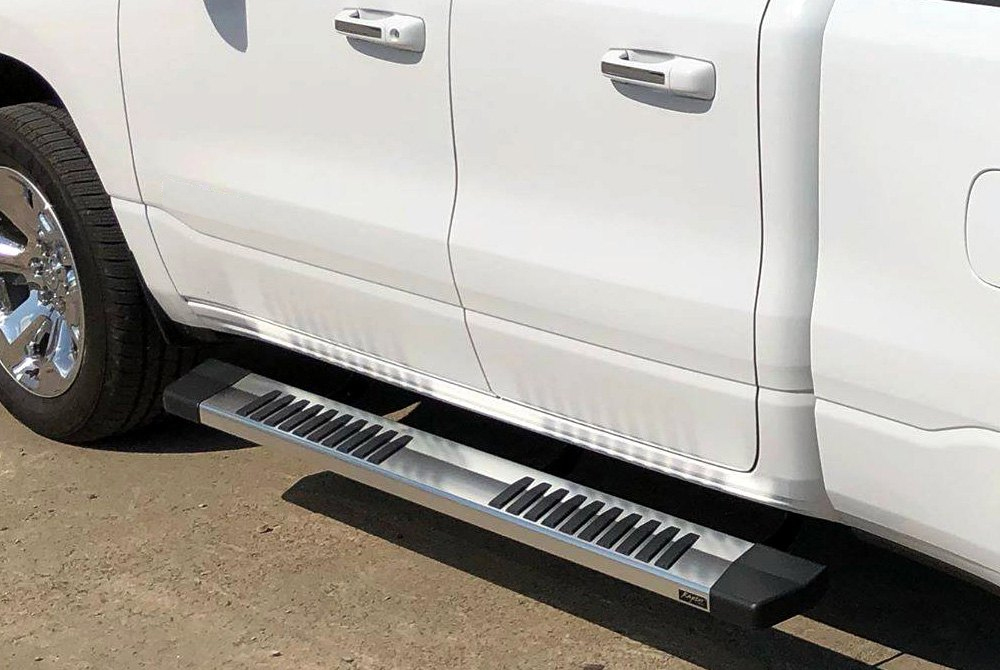Running boards are an essential accessory for many truck enthusiasts, providing not just functionality but also an aesthetic upgrade. They offer a convenient step-up for passengers and cargo as well as giving off that rugged appeal. However, many people find themselves facing a head-scratching dilemma: their AMP Research running boards aren’t working properly. What gives? Have you ever wondered why something designed to enhance your vehicle can sometimes turn into a troublesome source of frustration?
Before diving into the labyrinth of potential issues, let’s first understand the fundamentals of AMP Research running boards. These boards are engineered to deploy automatically when you open the door and retract when you close it. While this ingenious design adds a degree of sophistication to the vehicle, it also introduces a variety of mechanical components that can occasionally be less than reliable. So, what are the common pitfalls that lead to running board blunders?
Electrical Woes
For starters, let’s talk about the electrical system. The most common issue many users encounter stems from a malfunction in the electrical circuit. Your running boards rely on a series of motors and sensors that are activated by the vehicle’s door mechanisms. If any part of this system fails, your running boards might not deploy as anticipated. Perhaps the fuse has blown, or there’s a wiring issue that has compromised the circuit; either way, troubleshooting the electrical connections should be your first step.
Sensor Malfunction
In conjunction with electrical issues, sensors can also be culprits. Your running boards utilize proximity sensors designed to detect the opening and closing of your vehicle doors. If these sensors are misaligned, dirty, or damaged, the running boards may not respond correctly. Consider inspecting the sensors to ensure they are clean and functioning as intended. A simple adjustment or routine maintenance could save you a whole lot of aggravation.
Mechanical Issues
Of course, not all problems are electrical. Mechanical malfunctions can easily lead to a running board standstill. Over time, debris can accumulate in the hinges or pivot points, causing the boards to become sluggish or cease movement altogether. To combat this, periodic lubrication and cleaning are advisable. Your running boards have to bear a weight load, so any damage to these mechanical components can hinder their performance. A visual inspection may reveal wear and tear, providing important clues about what needs attention.
Installation Errors
Equally important to consider are installation errors. When installing AMP Research running boards, precision is critical. An incorrect installation can create a cascade of problems that may not be obvious at first glance. If your boards are misaligned or attached incorrectly, they may not function as designed. Do yourself a favor; consult the installation manual, and make sure that everything is positioned accurately and securely.
Climate Factors
Another facet to contemplate is climate impact. Extreme weather conditions can have a significant effect on the material integrity and functionality of your running boards. If you live in an area prone to freezing temperatures or excessive humidity, you might find that these elements have caused the boards to respond sluggishly, or in some cases, not at all. Regularly inspecting your running boards for signs of corrosion or damage, especially in harsh climates, can prevent minor issues from snowballing into bigger headaches.
Weight Considerations
It’s also worth mentioning that the running boards have a weight capacity that should not be overlooked. Overloading them can ultimately lead to mechanical failure. If you have a large crew or frequently transport heavy items, assessing the weight load your running boards are subjected to is critical. If they’ve been tested beyond their limits, an upgrade may be in order—and will certainly ensure you’re not facing inconvenient malfunctions in the future.
Care and Maintenance
Preventative measures can go a long way in ensuring the longevity and function of your AMP Research running boards. Regular cleaning and maintenance should be part of your vehicle care routine. This includes checking for accumulated dirt, lubricating moving parts, and ensuring all electrical connections remain intact. Ultimately, good upkeep extends the life of these accessories while minimizing the potential for unexpected breakdowns.
Conclusion
In summary, experiencing issues with your AMP Research running boards doesn’t have to lead you into a realm of frustration. Understanding the common pitfalls—from electrical failures to climate impacts—equips you with the knowledge to troubleshoot effectively. Whether it’s a mechanical hiccup or an installation oversight, many of these problems can be rectified relatively easily with a bit of diligence. Take the time to maintain, resolve, and ensure your running boards are performing at their best, so you can hit the road with confidence, each and every time.
